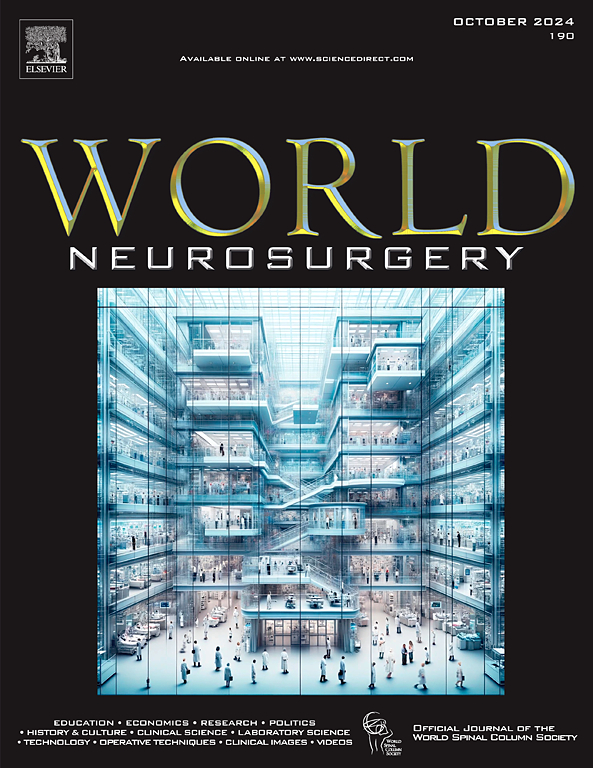Dual-Volume Cone Beam Computed Tomography Helps Elucidate Dural Arteriovenous Fistula Anatomy in the Presence of Tantalum-Opacified Liquid Embolic
IF 1.9
4区 医学
Q3 CLINICAL NEUROLOGY
引用次数: 0
Abstract
The presence of tantalum-opacified liquid embolic in incompletely treated dural arteriovenous fistulae (dAVFs) limits visibility of critically important angioarchitectural features. Modern cone beam computed tomography (CBCT) imaging can resolve the anatomy of dAVFs, allowing for a targeted embolic approach. However, distortion from beam hardening artifact is particularly limiting in CBCT imaging. We present a case of a dAVF embolized 4 times without cure at an outside hospital and ultimately referred to our practice for treatment. In this case, dual volume CBCT imaging (vs. the traditional single volume technique), combined with postprocessing tools on a modern workstation, enabled clear resolution of critical angioarchitectural features of the dAVF, leading to a targeted cure. This technique has the potential to vastly improve dAVFs resolution in the context of partial treatment, a challenging and not uncommon diagnostic and treatment challenge.
双容积锥形束CT有助于阐明钽混浊液体栓塞存在下的硬脑膜AVF解剖。
未完全治疗的硬脑膜动静脉瘘(dAVFs)中钽混浊液体栓塞的存在限制了至关重要的血管建筑学特征的可见性。现代锥束CT成像可以解析davf的解剖结构,允许靶向栓塞入路。然而,在锥束CT成像中,由光束硬化伪影引起的畸变特别有限。我们提出一个病例的dAVF栓塞4次没有治愈在医院外,最终转到我们的做法治疗。在这种情况下,双容积锥形束CT成像(与传统的单容积技术相比)与现代工作站的后处理工具相结合,能够清晰地分辨出dAVF的关键血管结构特征,从而实现靶向治疗。在部分治疗的情况下,这项技术有可能极大地提高davf的分辨率,这是一项具有挑战性且并不罕见的诊断和治疗挑战。
本文章由计算机程序翻译,如有差异,请以英文原文为准。
求助全文
约1分钟内获得全文
求助全文
来源期刊

World neurosurgery
CLINICAL NEUROLOGY-SURGERY
CiteScore
3.90
自引率
15.00%
发文量
1765
审稿时长
47 days
期刊介绍:
World Neurosurgery has an open access mirror journal World Neurosurgery: X, sharing the same aims and scope, editorial team, submission system and rigorous peer review.
The journal''s mission is to:
-To provide a first-class international forum and a 2-way conduit for dialogue that is relevant to neurosurgeons and providers who care for neurosurgery patients. The categories of the exchanged information include clinical and basic science, as well as global information that provide social, political, educational, economic, cultural or societal insights and knowledge that are of significance and relevance to worldwide neurosurgery patient care.
-To act as a primary intellectual catalyst for the stimulation of creativity, the creation of new knowledge, and the enhancement of quality neurosurgical care worldwide.
-To provide a forum for communication that enriches the lives of all neurosurgeons and their colleagues; and, in so doing, enriches the lives of their patients.
Topics to be addressed in World Neurosurgery include: EDUCATION, ECONOMICS, RESEARCH, POLITICS, HISTORY, CULTURE, CLINICAL SCIENCE, LABORATORY SCIENCE, TECHNOLOGY, OPERATIVE TECHNIQUES, CLINICAL IMAGES, VIDEOS
 求助内容:
求助内容: 应助结果提醒方式:
应助结果提醒方式:


